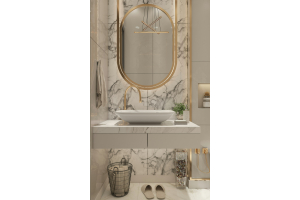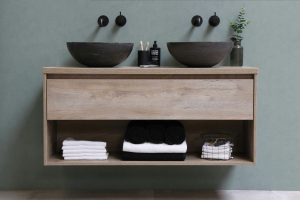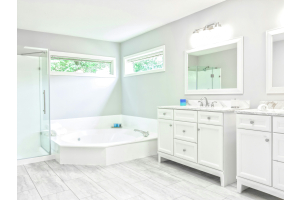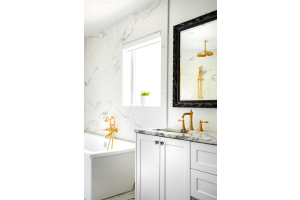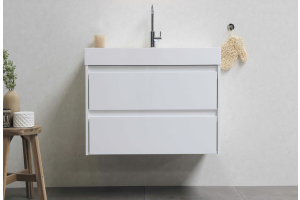If you don’t have the budget to remove old wall panels or aren’t quite ready to get rid of them completely, you can paint your wood veneer panels and completely change the ambiance of a room. This way, you can also give your home a refreshing upgrade without breaking the bank.
Things You’ll Need to Do the Job
The time required for this renovation project depends on the area you want to paint. If you're painting the panels in just one room, the overall process might take eight to twelve hours, or pretty much an entire day.
If you have others in the house who depend on you, like children, pets, or elderly relatives, the process might stretch to two days or more. To make sure you have enough time, we recommend dedicating an entire weekend to this project.
Apart from that, here are the tools you will need:
- Paint
- Primer
- Sandpaper (various grits)
- Paint brushes or foam rollers
- Caulk
- Caulking gun
- TSP solution (an inorganic cleaner)
- Drop cloths
- Ventilation (if needed)
- Safety gear (goggles, mask, gloves)
The quantity of paint, primer, and caulk depends on the area you have to cover. We recommend using an online paint quantity calculator to estimate the amounts you will need.
Six Steps for Painting Veneer Paneling
After assembling the materials and tools, it’s time to get down to business:
Step 1: Prepare the Panels
Before you start painting, determine if your veneer wall panels are made of original wood or vinyl wood. When it comes to how to tell if the wood is veneer, you can assess this by simply sanding a small area. If the coating comes off quickly, it's vinyl, and you'll need to be extra careful when applying paint and primer.
Next, cover the floor with a drop cloth, remove any nearby furniture, and cover power outlets with masking tape. Once this is done, clean the panels with a TSP solution. It removes dust, dirt, and stains, and sanitizes the surface. If you skip this step, the dirt or grease may bleed through the paint or primer, ruining the overall look.
Step 2: Fill Any Gaps and Sand the Panels (Optional)
As soon as the panel surface is clean and dry, fill the gaps between the wall panels using the caulk and caulking gun. You can skip this step if there are no gaps, holes, or damage that you want to cover.
Similar to caulking, sanding the veneer panels is also an optional step. Sanding makes the wall surface a bit gritty so it can hold the paint better.
Keep in mind that it’s easy to sand too hard and damage the veneer. So, apply gentle pressure and be careful when you sand. Make sure you clean the surface thoroughly and remove any sanding dust afterward.
Step 3: Apply Primer
Apply a thin coat of primer over the wall panels. Use smooth and even strokes with a brush or roller for even coverage. Let it dry for a few hours.
Be careful when picking the primer for your wood veneer panels. Some types of primers (like highly pigmented ones) may result in an uneven finish.
Step 4: Select the Paint
Choose the type of paint (water-based or oil-based) and finish (e.g., satin, semi-gloss, or gloss) you prefer.
Again, make sure it’s compatible with your veneer panel. The wrong type of paint can ruin all that effort you’ve put in so far, and the final look may not be anywhere near what you had in mind!
Step 5: Paint the Panels
When you’re ready to paint the panels, start by stirring the paint thoroughly. Then, apply the paint on the panels in vertical, thin, and even strokes. We recommend using a foam roller instead of a paintbrush.
Allow the first coat to dry completely and then apply the second one. Typically, each coat takes at least five to eight hours to dry. After you’ve painted the panels with a foam roller, take a paintbrush of appropriate width and paint the trim and crown molding in horizontal strokes.
Step 6: Give Finishing Touches
Lastly, inspect the painted surface for any imperfections or areas that need touch-ups and fix them.
Cleaning Up the Mess
Next, clean your brushes, rollers, and paint containers according to the paint manufacturer's instructions. Reinstall any hardware or furniture you removed before the painting process, and you’re done!
For more helpful information, don’t miss our post on panel ceiling ideas.

